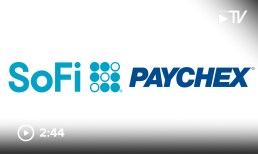Times of uncertainty can require a transformation agenda. Even across industries like financial services where institutions tend toward incumbency and not agility.
During Citi’s second-quarter 2025 earnings call on Tuesday (July 15), executives were asked during the Q&A session whether stablecoins “were a good opportunity” for Citi, and whether the bank had an “appetite to proactively disrupt” itself.
Citigroup CEO Jane Fraser didn’t shy away from the question, signaling that the 213-year-old financial institution is getting serious about digital assets.
“I can’t wait to answer this,” said Fraser, pointing to Citi’s own Citi Token Services (CTS) platform, which is already live in four markets. That system enables real-time treasury and liquidity management using tokenized representations of fiat currency on blockchain.
“Ours is a superior offering for our corporate clients. If there is anything that’s holding us back, it is our clients’ readiness to operate in this world … we are going to keep building these capabilities out into the payments, liquidity, financing space,” Fraser told investors.
The next logical step? Making these systems consumer- and client-facing, scalable, and compliant with emerging U.S. regulatory frameworks.
“The GENIUS Act is something that we are excited about. It has been hard for us to participate on a level playing field … clients want multi-asset, always-on, cross-border payments for financing and liquidity,” Fraser added.
Read more: Are Closed-Loop Financial Instruments the Future of Institutional Stablecoins?
Services and Markets Lead the Way for Citi
While on-chain experiments grab attention, Citigroup’s operational core is humming.
“We reported another very good quarter and continue to demonstrate that our strong results are sustainable through different environments. We’re improving the performance of each of our businesses to take share and drive higher returns,” Fraser said.
Citi’s Services business — which includes Treasury and Trade Solutions and Securities Services — posted record second-quarter revenues of $5.1 billion, up 8% year over year. Market share gains of 40 basis points in TTS were driven by a 7% rise in cross-border transaction value and higher deposit balances.
Markets followed closely with $5.9 billion in revenue (up 16% YoY), fueled by strength in fixed income and equities. Citi’s Prime Services saw record balances, and its rates and currencies desk posted a 27% YoY jump, reflecting client demand for hedging in a volatile rate environment.
Meanwhile, U.S. Personal Banking (USPB) saw 6% revenue growth, with branded cards and retail banking driving momentum. Strata Elite, Citi’s new premium card designed for affluent consumers, is slated for a Q3 launch, aiming to compete with AmEx Platinum and Chase Sapphire Reserve.
Still, risks remain. Net credit losses in U.S. cards remain elevated, especially in Retail Services, where the NCL rate hit 5.89%. However, these trends were within guidance.
Transformation and the Citi of Tomorrow
Whether through blockchain innovation or traditional banking, the message is clear: this isn’t your grandfather’s Citi. It’s a 21st century platform with a 19th century logo — undergoing one of the most ambitious transformations in modern finance.
In the first half of 2025 alone, Citi retired or replaced 211 legacy applications. It implemented an enterprise-wide strategic loan platform across North America, EMEA and Asia-Pacific. And it scaled its generative artificial intelligence (AI) developer tools, completing 740,000 automated code reviews — a productivity gain equivalent to 100,000 hours per week.
Agentic AI, Citi’s in-house autonomous development framework, is now in production. And two proprietary generative AI tools saw a 5x sequential increase in usage.
And of course there’s the bank’s bet on tokenization.
“Only 6% of stablecoins are payments, and if you are moving from cash to stablecoin and back to cash you’re incurring a 7% transaction cost. This is where Citi Token Services are so exciting, it enables to client to move from digital to fiat and back again without incurring that fee,” CEO Fraser explained to investors Tuesday. “The client can move cash on us, instantaneously, 24/7, cross-border. We absorb all the complexities such as the accounting, the AML.”




